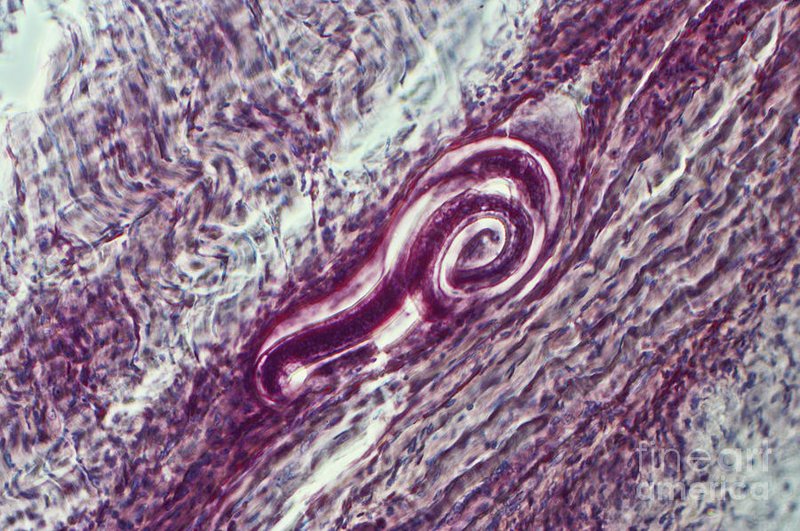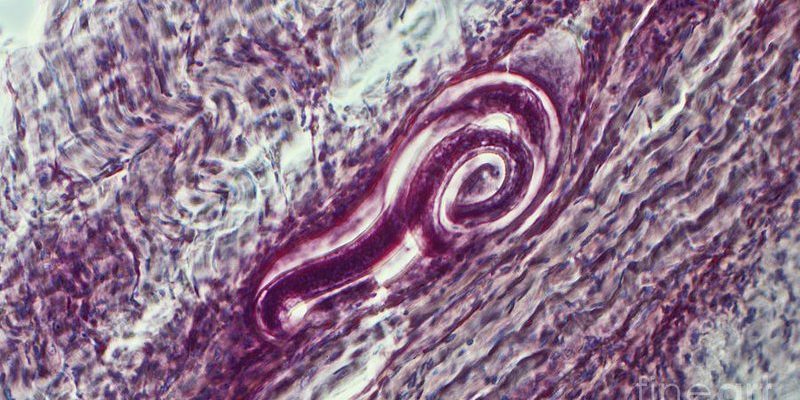
Trichinella spiralis is a type of parasitic roundworm, primarily known for causing trichinosis in mammals, including humans. While that sounds a bit scary, it’s important to realize that this little worm is also part of a larger picture in nature. Just like how a small cog in a machine keeps everything running smoothly, Trichinella can impact the health and balance of both soil and aquatic ecosystems. Let’s dig deeper into how this parasitic worm weaves its way into the fabric of our environment.
Understanding Trichinella Spiralis
At first blush, Trichinella spiralis may seem like just a nuisance, but it has some fascinating traits worth exploring. This microscopic parasite primarily thrives in the intestines of its host, where it lays eggs that eventually hatch into larvae. These larvae can then migrate to muscle tissues, causing various health issues in mammals.
But what’s intriguing is how these little guys fit into the larger ecosystem. Think of them as part of a cycle. When a mammal—like a wild boar or a domestic pig—gets infected, the lifecycle of Trichinella spiralis begins. Through its life cycle, it can influence the population dynamics of its hosts, affecting everything from predator-prey relationships to nutrient cycling in the soil.
The Life Cycle of Trichinella Spiralis
To really grasp how Trichinella spiralis operates, let’s break down its life cycle:
- Infection: A new host typically becomes infected by eating undercooked or raw meat containing the larvae.
- Development: Once inside the host’s intestines, the larvae mature into adults and start laying eggs.
- Migration: The larvae that hatch from the eggs then burrow into the host’s muscle tissues, where they can survive for years, almost in a dormant state.
- Transmission: The life cycle continues when another animal consumes the infected muscle tissue.
This cycle isn’t just a biological curiosity; it’s essential for understanding the impact of Trichinella spiralis on ecosystems. When an animal dies, the larvae can become part of the soil, contributing nutrients back to the earth, which in turn supports plant life and, eventually, herbivores.
Trichinella Spiralis in Soil Ecosystems
So, how does Trichinella spiralis specifically affect soil ecosystems? Well, it all comes down to nutrient cycling and soil health. When animals infected with Trichinella die, their bodies decompose, breaking down into organic matter. This natural process adds nutrients back into the soil, promoting plant growth.
However, the presence of Trichinella in an ecosystem can also signal potential imbalances. High populations of Trichinella might indicate an overabundance of specific hosts or an unhealthy environment. It’s nature’s way of reminding us that balance is crucial.
Here are a few notable impacts of Trichinella spiralis in soil environments:
- Nutrient Cycling: As mentioned, decaying hosts release nutrients, which are vital for healthy soil.
- Host Population Control: By affecting the health of certain mammal populations, Trichinella can indirectly control the number of herbivores, which influences vegetation.
- Soil Microbe Interactions: Trichinella larvae can interact with soil microbes, which can be either beneficial or detrimental depending on the context.
Understanding these connections can help us appreciate the hidden complexity of life in the soil—and the role Trichinella plays in it.
The Role of Trichinella Spiralis in Aquatic Ecosystems
While Trichinella spiralis is primarily known for its terrestrial impacts, it also has a presence in aquatic ecosystems. You might wonder how a parasite primarily associated with land animals influences watery realms. Well, many animals that live in or near water—like otters, raccoons, and even some fish—can act as hosts for this parasite.
In aquatic environments, Trichinella spiralis can affect these hosts in various ways:
- Food Chain Dynamics: When aquatic mammals are infected, it changes predator-prey relationships. For instance, predators may avoid sick or weak prey, inadvertently allowing certain populations to thrive.
- Nutrient Flow: As these hosts die, their decomposition releases nutrients into the water, supporting various aquatic plants and microorganisms.
- Ecological Balance: Just like in soil, the health and population of Trichinella-infected animals can indicate the overall health of the ecosystem.
Clearly, Trichinella spiralis has a knack for influencing both soil and aquatic ecosystems in profound ways.
Implications for Human Health
It’s hard to discuss Trichinella spiralis without mentioning its impact on human health. After all, this parasite is most notorious for causing trichinosis, a disease that can lead to significant health issues. When humans consume undercooked meat from infected animals, they risk exposing themselves to these pesky larvae.
Symptoms of trichinosis can vary greatly, from mild gastrointestinal distress to more severe muscular pain and inflammation. So, what can you do to protect yourself?
- Cook Meat Thoroughly: Ensure all pork and wild game is cooked to an internal temperature of at least 145°F (63°C).
- Practice Good Hygiene: Always wash your hands after handling raw meat or working in environments where Trichinella may be present.
- Awareness of Sources: Know the origin of your meat, especially if you’re consuming game or meats from exotic sources.
Being informed about Trichinella spiralis can empower you to take the necessary precautions.
The Bigger Picture: Conservation and Ecosystem Health
In the grand scheme of things, understanding Trichinella spiralis and its role in ecosystems encourages us to consider our actions’ broader impacts. Ecosystems are interconnected systems, and the health of one component often reflects the well-being of others.
For example, if we fail to manage wildlife populations properly, we may inadvertently allow the spread of parasites like Trichinella. This, in turn, can lead to declines in host species and disrupt the delicate balance of ecosystems.
Conservation efforts often focus on maintaining healthy populations of wildlife, which helps ensure balance in ecosystems. By recognizing the role of smaller organisms like Trichinella spiralis, we can better appreciate the intricate web of life that exists around us.
Trichinella spiralis may seem like just a tiny worm, but it plays a crucial role in both soil and aquatic ecosystems. By influencing nutrient cycling, predator-prey dynamics, and host population health, this parasite reminds us of the complex interconnections in nature. Plus, its impact on human health is a significant consideration that highlights the importance of safe food practices.
So, next time you think about ecosystems, remember the hidden players, like Trichinella spiralis, working within them. They may be small, but their effects ripple through the environment, shaping the world we live in. Understanding these connections not only enhances our appreciation for nature but also encourages us to take better care of our shared environment.

